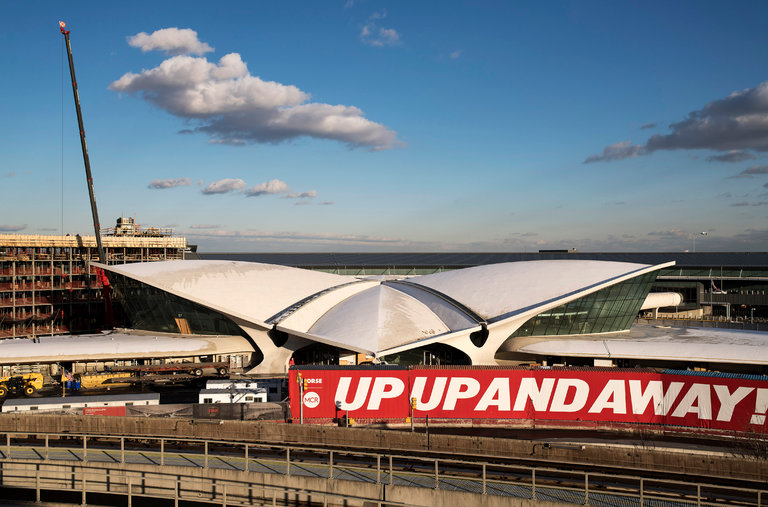As recently as the early 1960s, air travel was still glamorous and exciting; you dressed up to get on a plane, and looked forward to the food aloft. That was when Trans World Airlines opened a futuristic new terminal, designed by the Finnish architect Eero Saarinen at what was then best known as Idlewild and is now Kennedy International Airport.
The 200,000-square-foot-building, with its sinuous curves and swoops sheathed in white penny tiles, is a city, state and federal landmark, connected to Jet Blue’s Terminal 5. But it has not been used for 18 years.
Now it is being brought back to life as the lobby of the TWA Hotel, to open this spring with a restaurant and a lounge run by the renowned chef Jean-Georges Vongerichten, working with Tastes on the Fly, a company that specializes in airport food.
“It’s an exciting project; food in airports has been improving a lot,” said Mr. Vongerichten, a prolific restaurateur who, unlike many of his empire-building peers, has not opened an airport restaurant.
The restaurant, with 200 seats, will have the same name as its predecessor in the original terminal: Paris Café. Next to it will be the Lisbon Lounge (another name from the original terminal), serving cocktails and food.
“We thought Jean-Georges was a perfect match for Paris Café because of his French background,” said Tyler Morse, the chief executive and managing partner of MCR and Morse Development, which is renovating the terminal and building the hotel. His companies also developed and run the High Line Hotel in Chelsea, as well as scores of properties across the country.
Mr. Morse said they were researching T.W.A. in-flight menus from the 1950s and ’60s, and planned to bring back versions of some dishes, like chicken Champagne with truffles. “I’d want to do some classics, but also new stuff, lighter fare,” Mr. Vongerichten said.

The interior of Connie, a 1958 Lockheed Constellation airplane, will become a cocktail lounge adjacent to the old T.W.A. terminal.CreditEmon Hassan for The New York Times
Waiters and other personnel at the new restaurants will be dressed in outfits that echo what crew members wore at the dawn of the jet age, often bearing designer names like Valentino and Pierre Balmain. (Mr. Morse pointed out that before their industry was deregulated in 1978, airlines could not compete on price, only on service, so details like food, comfort and presentation counted.)
Chairs and tables will be Mr. Saarinen’s classic designs, and tableware will also take its cue from pieces created by the midcentury industrial designer Raymond Loewy, who did the original terminal interiors and is famous for creating the T.W.A. logo and the Studebaker Avanti.
From an open kitchen, Paris Café will serve breakfast, lunch and dinner. The hotel is in walking distance from all the Kennedy terminals, and will be open to anyone, even without a boarding pass. “A big community, not just travelers, lives nearby,” Mr. Morse said. The hotel, with 512 rooms in two new seven-story buildings, will be able to hold events like weddings, and has a separate kosher kitchen.
Behind the Saarinen building is a strip of tarmac where a vintage 1958 Lockheed Constellation, nicknamed Connie, is parked, and is being converted into a cocktail lounge.






